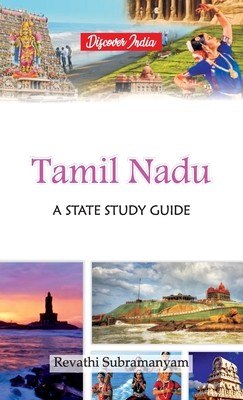
- We will send in 10–14 business days.
- Author: Revathi Subramanyam
- Publisher: Hawk Press
- ISBN-10: 9388318862
- ISBN-13: 9789388318860
- Format: 14 x 21.6 x 1.6 cm, hardcover
- Language: English
- SAVE -10% with code: EXTRA
Reviews
Description
The State of Tamil Nadu has a hoary antiquity. Though early sangam classics throw historical references, we pass to recorded history only from the Pallavas. The southern states of India were under the hegemony of the Cholas, the Cheras and the Pandyas for centuries. The Pallavas held supremacy from about the second quarter of the fourth century A.D. They were the originators of the famous Dravidian style of temple architecture. The last Pallava ruler was Aparajita, in whose reign the later Cholas under Vijayalaya and Aditya asserted themselves by about the 10th century. At the end of the 11th century, Tamil Nadu was ruled by several dynasties like the Chalukyas, Cholas and Pandyas. In the two centuries that followed, the imperial Cholas gained paramountcy over South India. Muslims gradually strengthened their position, which led to the establishment of the Bahamani Sultanate, by the middle of the 14th century. At the same time, the Vijayanagar Kingdom quickly consolidated itself and extended its sway over the whole of South India, and at the close of the century, Vijayanagar became the supreme power in South.
However, it crumbled at the battle of Talikota in 1564 to the confederate forces of the Deccan Sultans. The structure of the government of Tamil Nadu, like that of most other states of India, is determined by the national constitution of 1950. The head of state is the governor, who is appointed by the president of India. The book is of great utility to students, teachers, tourists, guides and general readers.
EXTRA 10 % discount with code: EXTRA
The promotion ends in 20d.16:45:08
The discount code is valid when purchasing from 10 €. Discounts do not stack.
- Author: Revathi Subramanyam
- Publisher: Hawk Press
- ISBN-10: 9388318862
- ISBN-13: 9789388318860
- Format: 14 x 21.6 x 1.6 cm, hardcover
- Language: English English
The State of Tamil Nadu has a hoary antiquity. Though early sangam classics throw historical references, we pass to recorded history only from the Pallavas. The southern states of India were under the hegemony of the Cholas, the Cheras and the Pandyas for centuries. The Pallavas held supremacy from about the second quarter of the fourth century A.D. They were the originators of the famous Dravidian style of temple architecture. The last Pallava ruler was Aparajita, in whose reign the later Cholas under Vijayalaya and Aditya asserted themselves by about the 10th century. At the end of the 11th century, Tamil Nadu was ruled by several dynasties like the Chalukyas, Cholas and Pandyas. In the two centuries that followed, the imperial Cholas gained paramountcy over South India. Muslims gradually strengthened their position, which led to the establishment of the Bahamani Sultanate, by the middle of the 14th century. At the same time, the Vijayanagar Kingdom quickly consolidated itself and extended its sway over the whole of South India, and at the close of the century, Vijayanagar became the supreme power in South.
However, it crumbled at the battle of Talikota in 1564 to the confederate forces of the Deccan Sultans. The structure of the government of Tamil Nadu, like that of most other states of India, is determined by the national constitution of 1950. The head of state is the governor, who is appointed by the president of India. The book is of great utility to students, teachers, tourists, guides and general readers.


Reviews